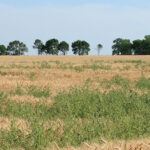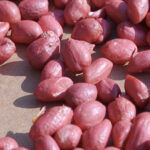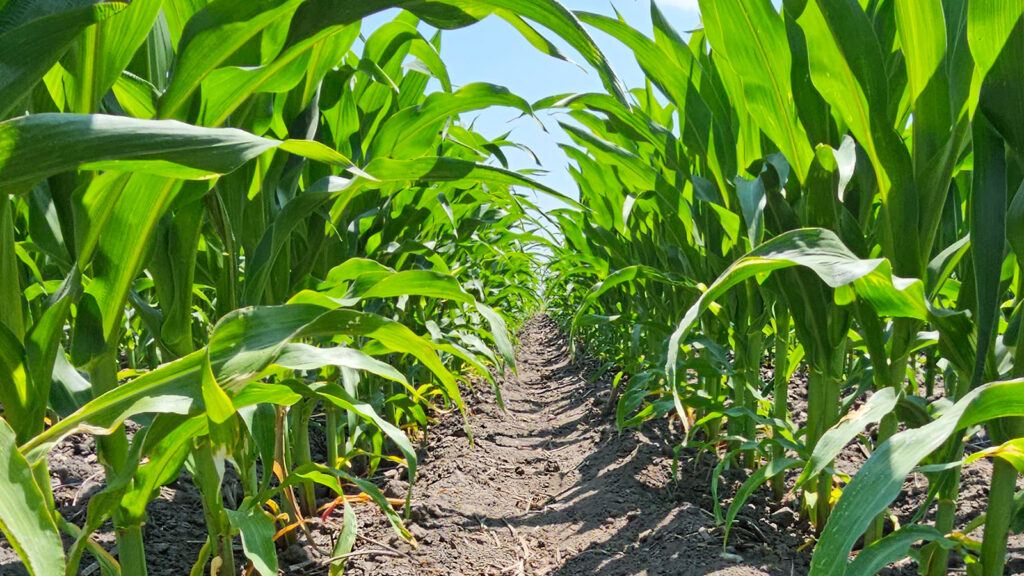Don’t Let Red Crown Rot Dethrone Your Yield Potential
Protect soybean yields from emerging disease threats with a reliable fungicide seed treatment like Saltro.

Be on the lookout for a new disease threat: Red Crown Rot. Since it was first discovered in IL in 2017, Red Crown Rot has spread across the Midwest and KY and grown into an emerging disease threat. Unfortunately, you may not even realize it is in your fields because its foliar symptoms looks a lot like Sudden Death Syndrome (SDS).
Red Crown Rot is a soilborne disease that causes stand reduction, pre- and post-emergence damping-off and ultimately reduced potential yield. The USDA says stem symptoms begin as a darkened, maroon/brick red discoloration of the lower stem that typically begins at the soil line and extends up the stem several centimeters. Then, foliar symptoms begin appearing as interveinal chlorosis between R3-R5. It is often found on individual plants that begin to develop into larger patches within a field. Soil tillage from environmental pressures such as windy conditions can lead to the spread of infection.
What is the Difference Between SDS and Red Crown Rot?
“We’ve been dealing with SDS for close to 30 years now, whereas Red Crown Rot is somewhat new,” said Phil Krieg, Syngenta agronomy service representative in IL. “One key difference is that SDS tends to infect that seedling in cooler, wetter conditions at emergence time, while Red Crown Rot thrives a little bit better when the soil is warm.”
While SDS and Red Crown Rot both infect seedlings at planting and display similar foliar scorch, one way to scout for it is looking for the stem symptoms. Unlike the red/maroon discoloration at the soil line Red Crown Rot causes, SDS-infected stems have a normal white pith and tan/brown discolored upper roots/lower stems.
Additionally, soybeans exhibiting symptoms of SDS will likely hold their leaves until the yellowed, dead leaf material drop off, leaving only the petiole (the small leaf stem that attaches the leaflet to the main plant stem) attached to the main stem. However, plants exhibiting symptoms of Red Crown Rot will leave leaves crispy, curled and dead while remaining attached.
Protect Yield from SDS, SCN and Red Crown Rot
Saltro® fungicide seed treatment helps protect against SDS, soybean cyst nematode (SCN) and Red Crown Rot* in eligible states via a 2(ee) label recommendation for Red Crown Rot suppression. The 2(ee) label recommendation has been approved in AR, IL, IN, IA, KY, MO and TN. For more information about the advantages of Saltro, reach out to your local Syngenta retailer.
*Syngenta supports a FIFRA Section 2(ee) recommendation for Saltro for suppression of Red Crown Rot in AR, IL, IN, IA, KY, MO and TN. Please see the Section 2(ee) recommendation to confirm that the recommendation is applicable in your state. The Section 2(ee) recommendation for Saltro should be in the possession of the user at the time of application.
Cover image: Red Crown Rot in soybeans. Photography courtesy of Stephanie Porter, Illinois Soybean Association.
- Red Crown Rot is difficult to distinguish from other soilborne soybean diseases like Sudden Death Syndrome.
- Unlike other diseases, Red Crown Rot causes stem symptoms that begin as darkened maroon/brick red discoloration of the lower stem.
- Saltro® fungicide seed treatment can protect against Red Crown Rot, Sudden Death Syndrome and Soybean Cyst Nematode.























